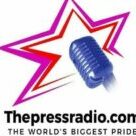Despair as the sea slowly swallows a Kenyan beauty spot

When Roberto Macri built his luxury hotel in the Kenyan coastal village of Kipini, it was about 100m (330ft) away from the beautiful waters of the Indian Ocean.
For nearly two decades his business thrived as tourists arrived in droves to enjoy the pristine beach and sunny weather.
The Tana Lodge Hotel, which was built on top of sand dunes, offered a spectacular view of the ocean.
But in 2014 people started to notice a change. The sea level had begun to rise and within five years, the hotel’s nine guest cottages had been swallowed by the sea – one after the other.
“The ocean changed steadily and started encroaching the hotel. The last standing cottage was gulped by the sea in 2019, marking the end of my glorious hotel,” Italian businessman Mr Macri told the BBC.
Now other residents of Kipini village, whose houses are located further back from the hotel, are facing the same prospect.
Kipini – built at the mouth of Kenya’s longest waterway, the Tana River, which flows into the Indian Ocean – is among several coastal villages that are slowly disappearing.
“The ocean advances every day and our houses are becoming weaker. We are afraid and distressed but there is nothing much we can do,” Saida Idris, a community leader, told the BBC.
She said several people had died and an unknown number were missing after being swept away by the rise in sea levels, coupled with strong winds and heavy tides, especially at night.
The depletion of mangrove forests along the shoreline – the coast’s main line of defence against erosion – is to blame.
Mangrove forests are full of salt-tolerant trees and shrubs that prevent sea water from advancing into farmlands by stabilising soil that otherwise could be washed away.
The cause of their disappearance appears to be a combination of deforestation by locals wanting coveted hard wood – and rising sea water as a result of climate change, which scientists feel is the major factor.
“The shoreline in Kipini is very exposed to the effects of strong winds that strengthen the ocean waves,” George Odera, a scientist with Fauna and Flora, a nature conservancy group, explained.
Kipini, with its welcoming palm trees and smells of spice and barbecuing seafood, evokes what every Kenyan pictures of laid-back coastal life.
But this idyll is under threat as the seawater levels continue to rise.
According to Omar Halki, a local administrator, nearly 10km (6.2 miles) of what used to be dry land have been swallowed by the sea in the last 10 years.
“It’s just a matter of time before the whole region goes under water,” he told the BBC.
Kipini has a population of about 4,000 people and residents told the BBC they could no longer dig or build strong foundations for their homes because of the rising sea levels.
Some in Kipini estimate that more than 1,000 people have relocated to other villages over the last decade.
Most of the wells or boreholes that used to give them fresh water have now turned saline, forcing them to look for alternative sources of drinking water.
The increasing salinity in groundwater has also severely affected farming.
Crabs and prawns, which have also served as a source of livelihood for locals, are now scarce as their breeding grounds are within the mangrove swamps.
Source: bbc.com





